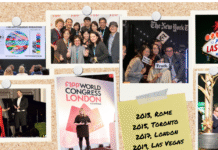The 27th annual New Delhi World Book Fair organized at Pragati Maidan in New Delhi between 5 January to 13 January 2019 was a roaring success. One of the oldest book fairs in India, it is organized by the National Book Trust of India. The theme of this year’s book fair was ‘Books for readers with special needs’ and the ‘guest of honor country’ was Sharjah. The fair offered a unique opportunity to exchange ideas, to promote titles and was an intellectual feast.
Apart from the thousand of book titles presented by hundreds of publishers around the world, the book fair hosted numerous mini-exhibits, international events, seminars, conferences, coversations, and cultural programs to captivate book lovers. The category-wise placed exhibitors made it easy for the visitors to navigate through the fair. Halls were designated for events related to children, authors, foreign exhibitors, cultural presentations, seminars and discussions, themes, and international events.
The event began on 5 January with the inauguration of the Sharjah Guest of Honor Pavilion. The aesthetically pleasing Sharjah Pavilion attracted quite a number of visitors which introduced them to the Arabic tradition, history, politics, literature, calligraphy, folk music, art, artifacts, costumes and books. From the chance to meet some of the extraordinary artists from Iraq, Syria, Saudi Arabia and Pakistan to a peek into the tax free and profitable environment of Sharjah’s publishing industry, the Sharjah pavilion made an exciting spot at the book fair.
We are all differently-abled
The theme of this year’s book fair emphasized the reading needs of the differently– abled and especially children. The attempt was to explore the problems related to the production and distribution of content for readers with various special needs. Panel discussions on the topics such as ‘Readers with special needs: Issues and challenges,’ ‘Inculcating reading habits among children, with special needs,’ a Disability Film Festival, discussion with differently-abled artists, poetry and music programs were some of the many approaches undertaken by the National Book Trust to meaningfully reflect on the important issue.
Dapon, an all dwarves theatre group in India performed a short drama depicting the daily discrimination and prejudices they have to suffer at the hands of ‘normal’ people on 8 January in the theme pailion. The pavilion was decorated posters, panels and art about and by some of the differently-abled artists and achievers.
The Children’s pavilion hosted a variety of workshops and panel discussions on magazines, children’s literature, storytelling, anger and stress management, skits on importance of books, seminars on the rights of students, science writing, imagination, dance, Indian history, career guidance and environment. The organisers of their activities included Pratham Books, Wise n Shine, National Book Trust, Amity University Press, Jawaharlal University University, ABDS Corporation, Rajiv Gandhi Foundation and the Sahitya Akademi.
The author’s corner was an interesting platform for budding and aspiring writers to gain an insight into the world of writers and publishers. Discussions revolved around new books, politics, evolving forms of writing and literature, various forms of writing, audio books, electronic media and the future of books. Publishers and authors such as Renu Saini from Prabhat Prakashan, Priyank from Benten Books, Nikhil Devasar and Venkatesan from Penguin Random House India, Vani Prakashan, Natasha Badhwar from Simon and Schuster, Reshma Qureshi and Tania Singh from Pan Macmillan India and many others shared and explained their views on these topics.
Life after acid attacks
The pavilion gave voice to acid attack victims in an event ‘Life after acid attack: being Reshma’ organized on 10 January where Reshma Qureshi spoke about how she overcame the suffering and damaged caused to her after a a brutal acid attack and evolving into a confident and strong person who is now the face of ‘Make love not scars’ an initiative aimed towards supporting acid attack survivors. On 11 January, the Braille edition of Ek Yogi ki Atmakatha, the Hindi translation of Autobiography of a Yogi by Paramahansa Yogananda, a yogi who spread the knowledge of yoga and spirituality among millions of people around the world.
Apart from the smorgasbord of events on diverse topics, book fair visitors found themselves lost for hours in the sea of books ranging from original titles to discounted books filling countless shelves in well designed visual settings. The 9-day long book fair ended on 13 January 2019 successfully with a total of 9,00,000 visitors. This years theme sentisized young and older visitors to the daily struggles and serious issues faced by differently-abled people while also empowering them to address these challenges.
















